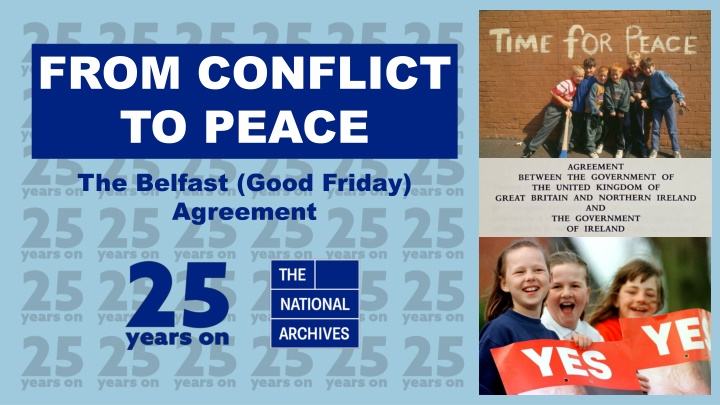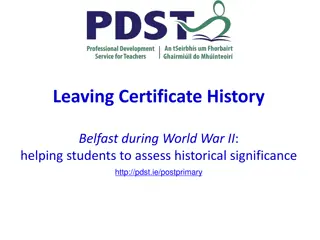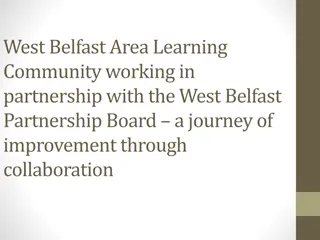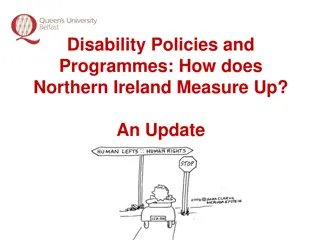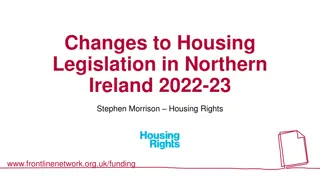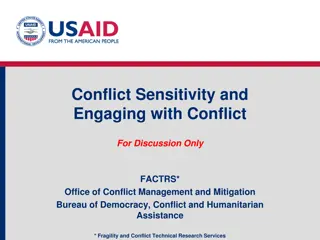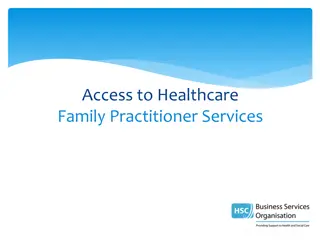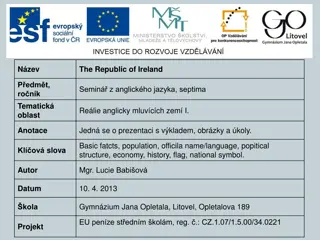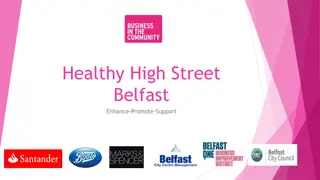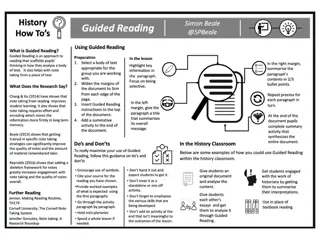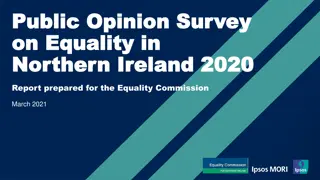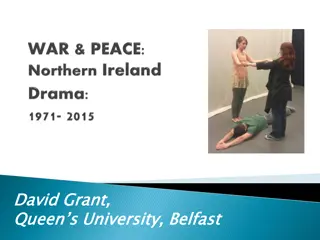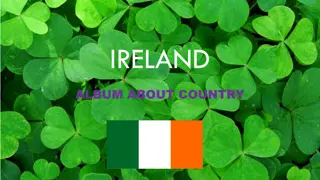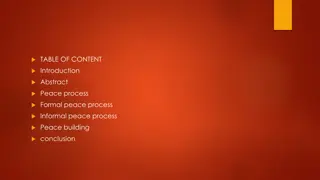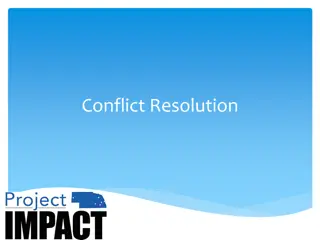Journey of Conflict to Peace: Northern Ireland and the Belfast Agreement
Northern Ireland, part of the UK, has a complex history marked by the divide between Unionists and Nationalists. The Belfast Agreement of 1998, following decades of conflict known as The Troubles, brought hope for peace by uniting various stakeholders. Learn about the rich culture, historical significance, and the pivotal role of the Belfast Agreement in Northern Ireland's path to peace.
Download Presentation

Please find below an Image/Link to download the presentation.
The content on the website is provided AS IS for your information and personal use only. It may not be sold, licensed, or shared on other websites without obtaining consent from the author.If you encounter any issues during the download, it is possible that the publisher has removed the file from their server.
You are allowed to download the files provided on this website for personal or commercial use, subject to the condition that they are used lawfully. All files are the property of their respective owners.
The content on the website is provided AS IS for your information and personal use only. It may not be sold, licensed, or shared on other websites without obtaining consent from the author.
E N D
Presentation Transcript
FROM CONFLICT TO PEACE The Belfast (Good Friday) Agreement
What do you know about Northern Ireland?
Welcome to Northern Ireland Northern Ireland is located in the island of Ireland but it is a part of the United Kingdom. It is home to 1.9 million people. The capital is the city of Belfast. It has its own Assembly and elected government which shares power on behalf of its two historic communities. English is the most common language but some people can also speak Irish and a few can speak Ulster Scots.
Northern Ireland is small but mighty It is famous for John Dunlop inventing pneumatic tyres Building the Titanic Being the set of Game of Thrones Inspiring C.S.Lewis to write The Chronicles of Narnia Fathering three American Presidents (and being related to seven more). Having Lough Neagh, the largest lake in the U.K. and Ireland Having a causeway built by giants!
A brief history Northern Ireland was established in 1921. It remained part of the U.K. when the rest of Ireland became an independent country in 1922. Its two historic communities hold different religious and political beliefs. Unionists are often Protestant and want to remain a part of the U.K. Nationalists are often Catholic and want to unite with the rest of Ireland to be a single country.
What do you know about The Belfast or Good Friday Agreement?
Good Friday April 10th1998 A pair of Agreements were reached in Belfast, the capital of Northern Ireland, between the Prime Minister of the United Kingdom and the Taoiseach of Ireland, and between a range of parties and civil society organisations. What were these Agreements? Why were they so important?
Northern Ireland before the Agreement Before the Agreement was signed there had been a terrible conflict in Northern Ireland for 30 years from the late 1960s to 1998. This was known as The Troubles . There was a lot of mistrust and fear. Soldiers patrolled the streets. Groups from both sides, called paramilitaries, used violence. Many people were killed and much damage was done. There were many efforts to bring about peace but these were unsuccessful.
The search for peace In 1985 the governments of the U.K. and Ireland held talks to try and start a process to bring about peace. An agreement was signed at Hillsborough Castle in Northern Ireland. This promoted further co-operation between the two countries and between Ireland and Northern Ireland. It also stated that any change in Northern Ireland s status as part of the U.K. would require the consent, or agreement, of a majority of its people.
The principle of consent In 1993 a Joint Declaration between the two governments was announced at Downing Street in London on the principle of consent. This recognised that the desires of Unionists to remain part of the U.K. and of Nationalists to create a united Ireland are both legitimate wishes. It also confirmed that any change in Northern Ireland s status would require the agreement of both a majority of people in Northern Ireland and a majority of people in Ireland.
The challenge of securing peace Despite these agreements the violence continued. Finding a solution to end it and bring lasting peace was not easy. Brave decisions would need to be made. Enemies would have to meet and agree to compromise. Old laws would have to be changed and new ones made. Communities would have to work together to make peace a reality.
Would the Belfast (Good Friday) Agreement end conflict and bring peace?
25 years of working together for peace Northern Ireland has been transformed over the past 25 years. It is a vibrant, exciting country full of beauty and creativity. Its two historic communities live and work closely together in many areas. Violence is extremely rare but challenges remain. However the people of Northern Ireland know that the rewards of peace are greater than the challenges.
What can we learn about peace-making from the Belfast (Good Friday) Agreement?
